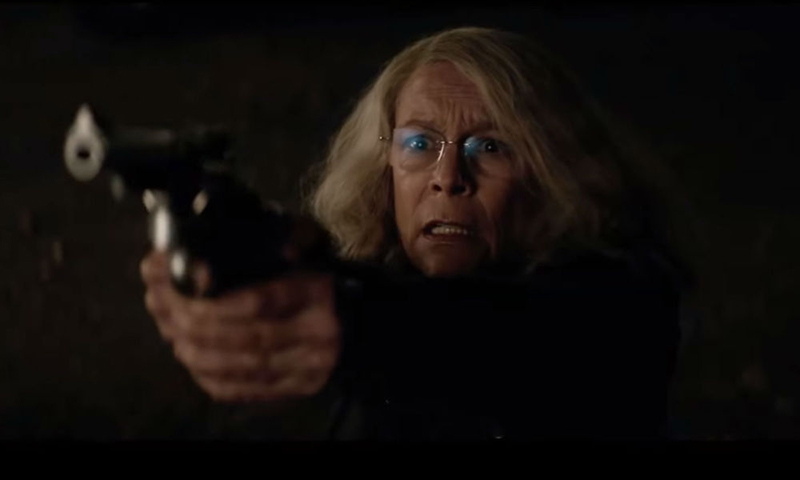Halloween
So much has changed about the landscape of horror films in general, and slasher flicks in particular, during the past four decades. At this point, making a sequel to the original Halloween either feels like a nostalgic gimmick or a transparent attempt to relaunch a well-worn franchise.

Jamie Lee Curtis in HALLOWEEN (2018).

So much has changed about the landscape of horror films in general, and slasher flicks in particular, during the past four decades. At this point, making a sequel to the original Halloween either feels like a nostalgic gimmick or a transparent attempt to relaunch a well-worn franchise.
Both are true in the case of director David Gordon Green’s latest homage to John Carpenter’s classic, which literally takes place 40 years after the events in the original — making it the rare horror film for the AARP crowd.
Laurie Strode (Jamie Lee Curtis), whose friends were brutally murdered by masked psychopath Michael Myers in the first film, is now a paranoid grandmother still living in the Illinois suburbs. Psychologically scarred, she still keeps tabs on Michael, who is about to be transferred to a different prison on Oct. 30, of course.
Sigh. The prison bus crashes and Michael escapes to start stocking up on knives, prompting a desperate Laurie to convince her family, especially her estranged daughter (Judy Greer) and rebellious granddaughter (Andi Matichak), that the threat is real.
There’s not much creative rationale to the new Halloween, which positions itself as a fresh spin on familiar material, with a female empowerment angle, yet seems more programmed to fill a studio’s seasonal release date than anything else.
Green’s affection for the source material is obvious, from the opening credit sequence to the spirited participation of Curtis — and also Nick Castle, who reprises his portrayal of Michael — to his usage of Carpenter’s iconic music score. It’s certainly more stylish and suspenseful than most of the cheapo Halloween sequels over the years.
However, outside of some intense bursts of brutal violence that should satisfy genre aficionados, the film is moderately creepy but produces few genuine frights, in part because there aren’t many surprises during the labored setup or the ensuing obligatory killing spree.
The inevitable final showdown between Michael and Laurie’s family is staged with a thrilling level of urgency the rest of the film generally lacks. Then again, any closure won’t much matter when the next sequel or reboot comes along, and we start all over again.
“There’s nothing to be gained by keeping evil alive,” explains a psychologist studying Michael’s case. For the characters and filmmakers alike, that’s sound advice.
Rated R, 106 minutes.